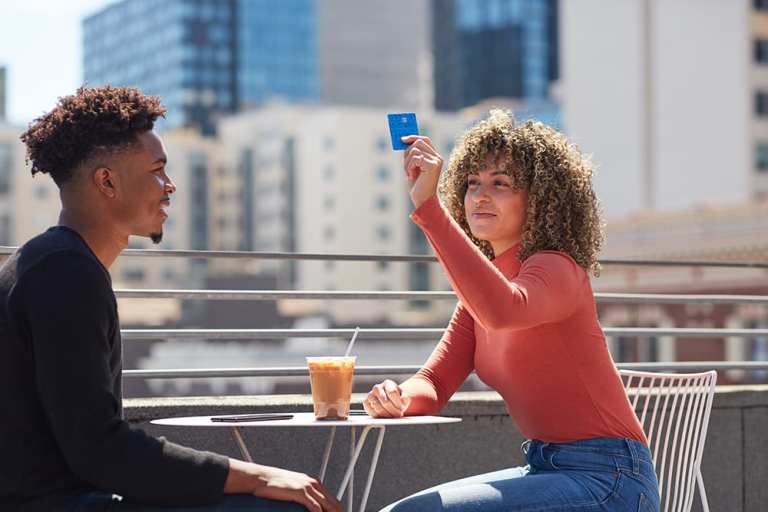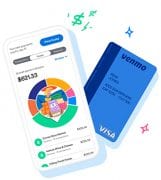
Credit card launches happen a lot, and tend to blend together after a while, particularly for payments peeps who keep a close eye on such things. But Venmo – which dropped its first credit card for consumers on Monday (Oct. 5), issued by Synchrony and powered by the Visa network – is aiming for something different than just another card launch.
Darrell Esch, Venmo’s senior vice president and general manager, told Karen Webster in a conversation shortly before the launch that Venmo is trying to add a fourth leg to the three-legged stool that has historically defined a card’s value proposition. In addition to price, reward structure and credit line assignment, Venmo wants to add a fourth advantage: user experience.
He said that’s an addition and Venmo is uniquely well-placed to offer, because the app isn’t a card brand trying to create a digital experience for customers. Instead, Venmo’s entire DNA is digital.
“The fact that Venmo is an app makes us unlike any other card out there possibly trying to do something in-app experiences,” he said. “Our primary service is offering an app that’s financial.”
Designing In Choice
 Esch said his company designed the new card to be in line with the Venmo experience that consumers are already familiar with, in terms of the ability to customize things to their actual needs.
Esch said his company designed the new card to be in line with the Venmo experience that consumers are already familiar with, in terms of the ability to customize things to their actual needs.
For example, maximizing card rewards can be tricky for consumers because of the way companies frequently dole out rewards in specific categories. And as consumers holding travel rewards cards have learned in the past six months, it’s possible for customer spending to get quite out of step with their cards’ rewards programs.
So, the Venmo card will give cash back to customers based on where they actually spend money — categories that can change month to month. “We’re effectively gaming it on the customer’s behalf,” Esch said. “They’ll get the maximum reward for their maximum spend category in any given cycle. It changes with their behavior from cycle to cycle.”
Whatever that maximum spend category ends up being — whether it’s rent or utility payments — customers will get 3 percent cash back. Their second-biggest spending category will net 2 percent cash back, while everything else will get a 1 percent cash-back reward. Esch added that the cash settles straight into a customer’s Venmo account, with none of the long waits some other cash-back programs require.
But more than matching customers’ rewards to their spend, the new card aims to make it incredibly clear to users how the money they’re spending is generating rewards, which inserts a bit of gamification into the app. “The customer will be able to see their trends through the course of the month,” Esch noted.
Splittable Card Payments
More than simply letting consumers see transactions in the app, the card has additional levels of control to make it possible to continue interacting with transactions past the payments.
Esch said app users were attracted to Venmo in the first place because of how easy it is for friends to split up group payments. He said that for the new card to truly be a Venmo card, it must have that functionality built in — at more than one point.
 One point is from within the app itself. For example, a customer can easily see a pizza order that he split with a friend and placed on his Venmo card within the app. Simply by hitting the “Split” button next to the payment logged within the app, he can send a notification to his dining companion, who can then send back their share of the total check.
One point is from within the app itself. For example, a customer can easily see a pizza order that he split with a friend and placed on his Venmo card within the app. Simply by hitting the “Split” button next to the payment logged within the app, he can send a notification to his dining companion, who can then send back their share of the total check.
“And then I can take that a step further,” Esch said. “When you pay me back, it can either go straight into my Venmo account or it can be designated to go straight to the card, so it will actually pay down the card balance.”
That split function isn’t just built into the app, he said, but also into the physical card’s design. When we all someday go back to dining in restaurants with friends, there will also be a return of those awkward moments when a group of people hands a waiter or waitress five cards to run. The new Venmo card comes with a QR code on the front that allows one person to hand the card to a waitperson to pay, and can then pass the card around the table so friends can scan the code and pay their share.
Esch said that feature tended to generate the biggest positive reaction during the card’s early tests. “When we point out the pure QR and what it does, there’s a second of a mind-blown reaction,” he said. “Everybody gets it right away.”
The Path From Here
The Venmo card has been in internal testing so far, but is now going live to a limited selection of outside users.
The company is issuing the first round of cards by invitation only to Venmo users who have the app’s most up-to-date version. But Esch said Venmo expects to make the card available to “tens of thousands of customers” by 2020’s end, with an eye toward opening up to the company’s U.S. general-member population in 2021.
The company has high hopes that the new card will be “top of wallet” for users, as opposed to just a category card. “We think the engaging nature of it, and this transparency around managing your finances, is going to be big for most people,” Esch said. “This thing is different than what else is out there. I get excited every time I talk about, and I can’t wait to release it into the wild.”